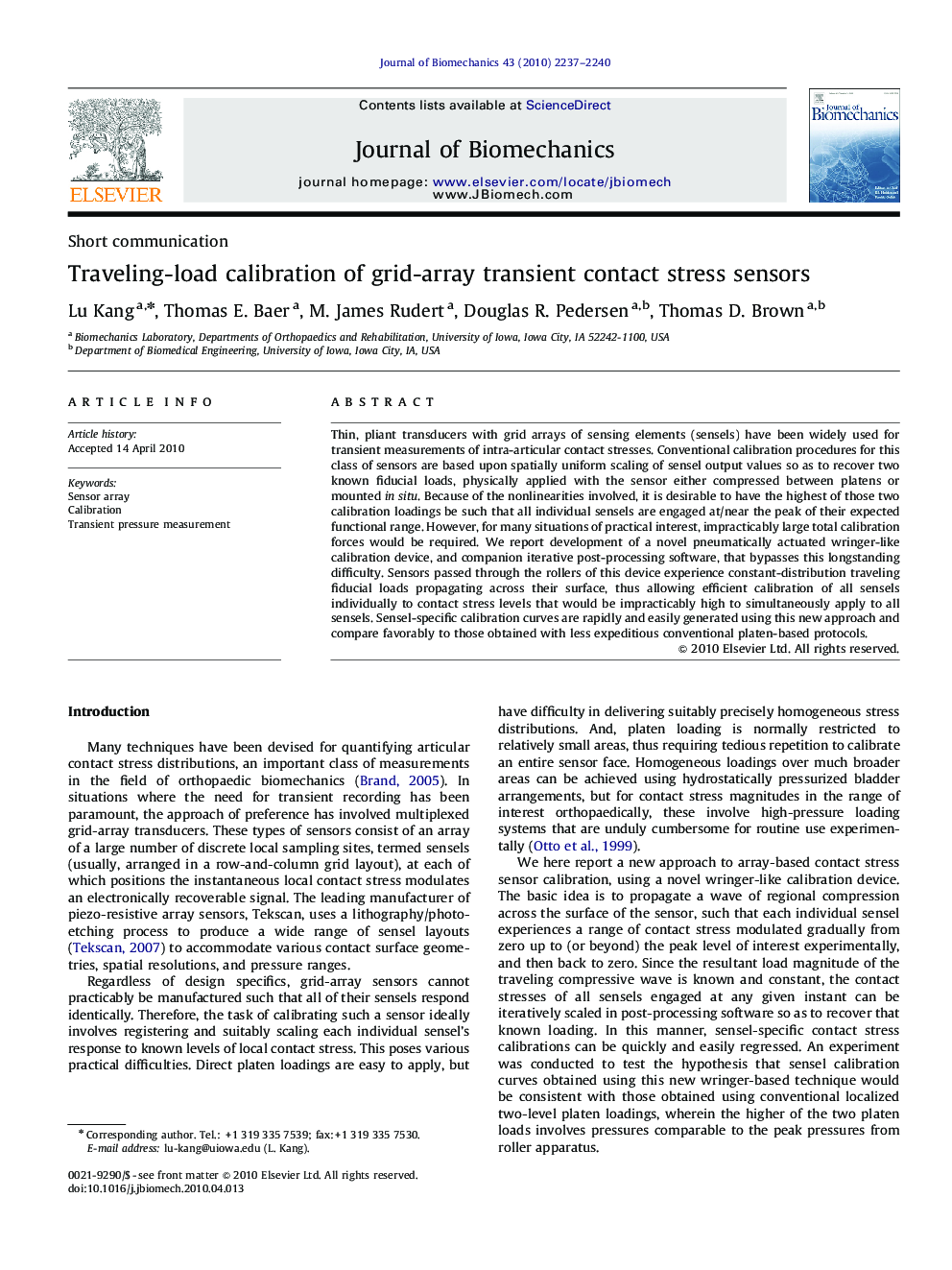| Article ID | Journal | Published Year | Pages | File Type |
|---|---|---|---|---|
| 873745 | Journal of Biomechanics | 2010 | 4 Pages |
Thin, pliant transducers with grid arrays of sensing elements (sensels) have been widely used for transient measurements of intra-articular contact stresses. Conventional calibration procedures for this class of sensors are based upon spatially uniform scaling of sensel output values so as to recover two known fiducial loads, physically applied with the sensor either compressed between platens or mounted in situ. Because of the nonlinearities involved, it is desirable to have the highest of those two calibration loadings be such that all individual sensels are engaged at/near the peak of their expected functional range. However, for many situations of practical interest, impracticably large total calibration forces would be required. We report development of a novel pneumatically actuated wringer-like calibration device, and companion iterative post-processing software, that bypasses this longstanding difficulty. Sensors passed through the rollers of this device experience constant-distribution traveling fiducial loads propagating across their surface, thus allowing efficient calibration of all sensels individually to contact stress levels that would be impracticably high to simultaneously apply to all sensels. Sensel-specific calibration curves are rapidly and easily generated using this new approach and compare favorably to those obtained with less expeditious conventional platen-based protocols.
